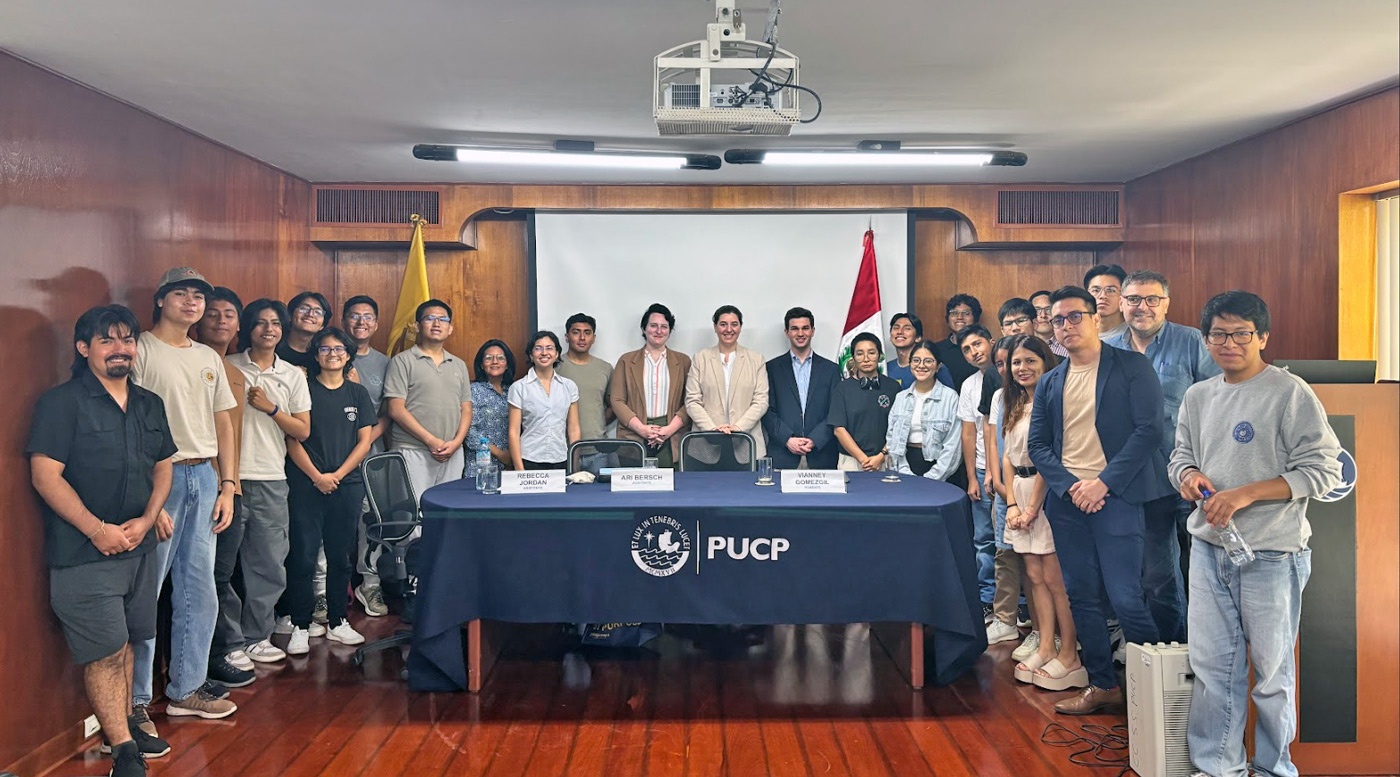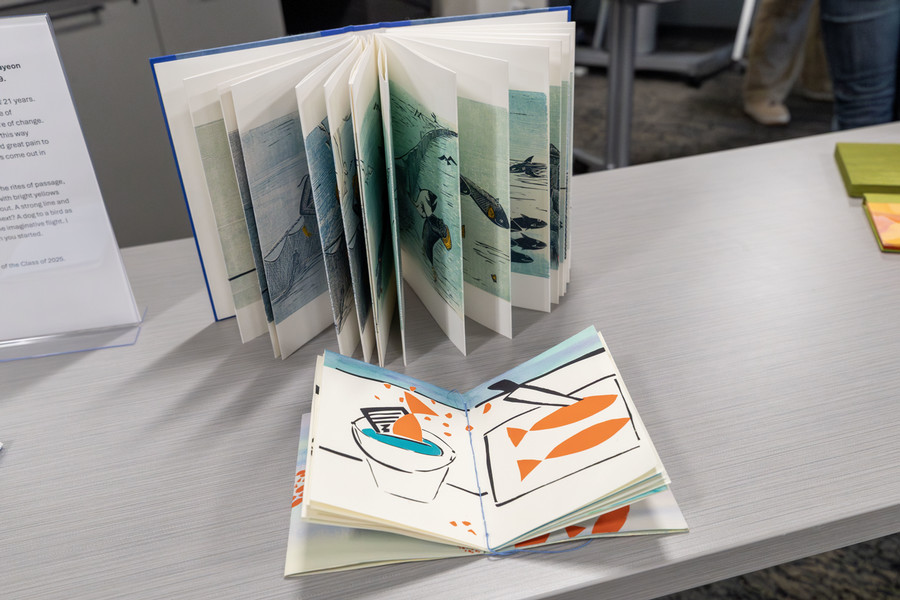Students Project Spectacular Visions in Thorne Hall
By Rebecca GoldfineThe swarm, the scrolls, and the spectral piano player were a few of the final creations created by students in one of Erin Johnson's fall classes, a digital and computational studies course called Interactivity, Computation, and Media Architecture.
After spending a semester investigating how digital media can transform public architecture and alter ordinary places, students spent an evening transforming Thorne Dining Hall with their own installations.
The dining hall's lights were dimmed at 6:00 p.m. One after another, Johnson's students projected lights, images, and videos onto a corner of the hall. Some students incorporated music and sound; others invited diners to use a remote control to interact with the pieces.
The dining hall offered a fruitful venue for the projects. "Thorne is relatively the same each time," Johnson said. "You get your food, eat, talk with friends and colleagues. We wanted to see how conversations change and bodies move differently in the space. How do people relate differently when media is embedded in space they're in?"
Among topics the class read and discussed last semester were surveillance, big data, privacy, social media, and social movements. "They used those readings as fodder, and with their liberal arts training, thought about how do we bring this material into, or embed it into architecture on campus?" Johnson said.
Students featured in video: Darius Riley ’19, Chinese handscrolls; Roger Trejo ’21, "El Tiempo "(keyboard piece); and Reid Brawer ’21 (the swarms of light)
The academic study of digital and computational studies at Bowdoin teaches students to apply new technologies and computational analysis to scholarship in the humanities, social sciences, sciences, and arts. Digital and computational methods and analysis can add "new perspectives to the core questions that have always concerned the humanities, social sciences, and natural and physical sciences," according to the department's faculty.



